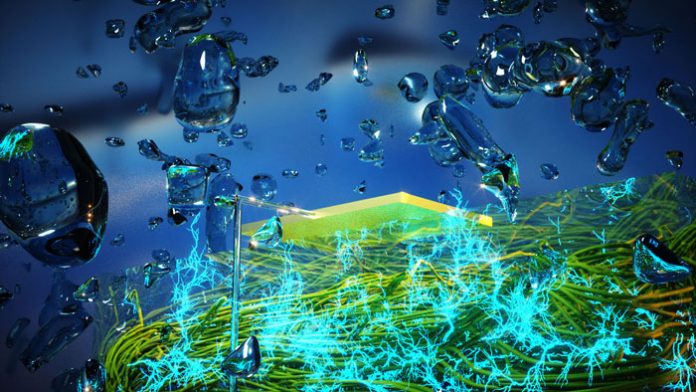Obtaining environmental energy from the environment using solar panels or wind farms has certain limitations that do not depend on a person and do not allow to continuously receive electricity throughout the day and night in any place.
However, scientists have found a way to continuously generate energy. For this purpose, the unique properties of microbes from the Geobacter genus were used to form bacterial nanowires capable of conducting electricity. Such microscopic “sedimentary organisms” were discovered about thirty years ago in the silt of the Potomac River.
A team from the University of Massachusetts Amherst has created a device called the Air-gen, capable of producing electricity from air around the clock. The basis of the device is a thin layer of protein nanowires with a diameter of 7 μm, which are placed between two electrodes in air. The nanofilm adsorbs water vapor from the environment, which allows the generation of direct current between the electrodes.
Previously, such a property of hydrovoltaic electricity generation was observed in graphene. However, only short electrical impulses were generated, the duration of which was limited to a few seconds.
The Air-gen device allows you to generate a constant voltage of about 0.5 V on a film, which is 7 micrometers thick and has a current density of about 17 microamps per square centimeter. Connecting multiple devices linearly increases voltage and current, which will allow you to receive energy and recharge small devices. Electricity production from the air with the help of Air-gen devices is available even in the regions with extremely low humidity, such as the Sahara desert.







